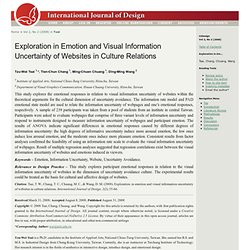

A Ball Tied to a String and Swinging round and round. MythBusters Bullet Fired Dropped. Antonio Damasio: This Time With Feeling. Bio David Brooks David Brooks has been an op-ed columnist for The New York Times since 2003.

Previously, he was an editor at The Wall Street Journal, a senior editor at The Weekly Standard, and a contributing editor at Newsweek and The Atlantic. Currently a commentator on PBS’s “The NewsHour with Jim Lehrer,” Brooks is also the author, most recently, of The Social Animal: The Hidden Sources of Love, Character. His earlier books are Bobos in Paradise: The New Upper Class and How They Got There and On Paradise Drive: How We Live Now (And Always Have) in the Future Tense. Antonio Damasio Antonio Damasio is a University Professor and David Dornsife Professor of Neuroscience at the University of Southern California (where he also heads the Brain and Creativity Institute), an Adjunct Professor at the Salk Institute, and the author of several books describing his scientific thinking.
To download this program become a Front Row member. How Our Brains Feel Emotion. With rendition switcher Question: What is happening in our brain when we feel an emotion?

Antonio Damasio: Feeling of an emotion is a process that is distinct from having the emotion in the first place. So it helps to understand what is an emotion, what is a feeling, we need to understand what is an emotion. And the emotion is the execution of a very complex program of actions. Some actions that are actually movements, like movement that you can do, change your face for example, in fear, or movements that are internal, that happen in your heart or in your gut, and movements that are actually not muscular movements, but rather, releases of molecules. And an emotion consists of a very well orchestrated set of alterations in the body that has, as a general purpose, making life more survivable by taking care of a danger, of taking care of an opportunity, either/or, or something in between.
And it’s going to be the same across even other species. Why we cry [video. Exploration in Emotion and Visual Information Uncertainty of Websites in Culture Relations. Exploration in Emotion and Visual Information Uncertainty of Websites in Culture Relations Tzu-Wei Tsai 1,*, Tien-Chun Chang 1, Ming-Chuen Chuang 1, Ding-Ming Wang 2 1 Institute of Applied Arts, National Chiao-Tung University, Hsinchu, Taiwan2 Department of Visual Graphics Communication, Hsuan Chuang University, Hsinchu, Taiwan This study explores the emotional responses in relation to visual information uncertainty of websites within the theoretical arguments for the cultural dimension of uncertainty avoidance.

The information rate model and PAD emotional state model are used to relate the information uncertainty of webpages and one’s emotional responses, respectively. A sample of 239 participants was taken from a pool of students from an institute in central Taiwan. TOKTalk.net. The true faces of emotion - life - 25 July 2012. Test yourself: "What emotions are written all over their faces?

" IN 1868, while working on his latest book on evolution, Charles Darwin liked to show visitors to his house a series of ghoulish photographs of people's faces. The pictures, taken by French physiologist Guillaume-Benjamin Duchenne, showed people whose facial muscles were being zapped by electric shocks, contorting them into strange and often eerie arrangements. Darwin was fascinated by how a twitch of the mouth here or furrow of the brow there could conjure up the impression of an emotion - fear, say, or surprise. He wanted to know whether his guests perceived the same emotions in the pictures. They usually did. Darwin came to the conclusion that emotional facial expressions were universal: people all over the world made the same ones, and could easily and automatically recognise them in others. What Makes Music Expressive? - Interactive Feature. VS Ramachandran on your mind. Emotion / Intuition. Written on January 24th, 2010 by Oliver Kim Comments: 4 Here are 2 videos which link arts, math, sense perception and emotions.

Watch them! They are very good, easily understndable and motivating! Ifound two videos which illustrate the importance of emotions and perception in understanding statistics. The second video is quite remarkable as well. Continue reading »